WHAT IS PUBLIC POLICY?
- Whatever government chooses to do or not to do
- Decisions by government to alter or change the status quo
- The actions of government and the intentions that determine those actions
THESE DEFINITIONS SHARE THE IDEAS THAT:
- Policy responds to a problem
- The policy is made on the “public’s behalf”
- Policies have goals
- Policies are made by governments
- Policies are implemented by public and private actors
- Policy can be action or inaction
SOCIAL CONSTRUCTION OF TARGET POPULATION
- Refers to:
- The recognition of the shared characteristics that distinguish a target population as socially meaningful, and the attribution of specific, valence-oriented values, symbols, and images to the characteristics.
- Social constructions are stereotypes about particular groups of people that have been created by politics, culture, socialization, history, the media, literature, religion, and the like.
SOCIAL CONSTRUCTIONS ARE THE NORMATIVE AND EVALUATIVE IMAGES INDIVIDUALS HOLD CONCERNING DEFINABLE GROUPS
- “Social constructions emerge from emotional and intuitive reactions…”
- More than simple stereotypes, social constructions are mutually reinforcing, making the resistant (but not immune) to change.
- Both positive and negative constructions influence political debates and policy design.
- The agenda, tools, and rationales of policy impart messages to target populations that inform them of their status as citizens and how they and people like themselves are likely to be treated by government. Such information becomes internalized into a conception of the meaning of citizenship that influences their orientations toward government and their participation.
- Policy teaches lessons about the type of groups people belong to, what they deserve from government, and what is expected of them. The messages indicate whether the problems of the target population are legitimate ones for government attention, what kind of game politics is (public-spirited or the pursuit of private interests), and who usually wins.
SOCIAL CONSTRUCTIONS REVEAL THE WAYS IN WHICH POLICY CREATES POLITICS
- Policy designs have both material and symbolic effects on target populations.
- Material effects of policy design on target populations could involve the structuring of opportunities.
- Symbolic effects of policy design are seen in political participation.
- Social constructions become embedded in policy as messages that are absorbed by citizens and affect their orientations and participation patterns.
- Policy sends messages about what government is supposed to do, which citizens are deserving (and which are not), and what kinds of attitudes and participatory patterns are appropriate in a democratic society.
- There are strong pressures for public officials to provide beneficial policy to powerful, positively constructed target populations and to devise punitive, punishment-oriented policy for negatively constructed groups.
POLICY PROCESS
- Policy process is a system.
- Systems are influenced by, and influence, their environments.
- Systems are characterized by inputs and outputs.
- Policy process at a minimum encompasses:
- 1. Political behavior among individuals, groups, and coalitions.
- 2. Minor and major policy change.
- 3. Use of information and resources by official and unofficial actors.
- 4. Collective action problems.
- 5. Social constructions.
- 6. Power, inequalities, and policy design.
PUBLIC POLICY INVOLVES…
- Groups
- Institutions
- Structures
- Solving Problems
FORMS OF POLICIES
- Constitutional provisions
- Laws
- Regulations
- “Policies are revealed through texts, practices, symbols, and discourses that define and deliver values including goods and services as well as regulations, income, status, and other positively or negatively valued attributes.” (Schneider and Ingram)
PUBLIC POLICY IS SHAPED BY SEVERAL CONTEXTS
- Social
- Institutional
- Political
- Economic
- Other contexts
SYSTEM INPUTS
ELECTION RESULTS
- Election results can change policy agendas and priorities.
- Do election results constitute mandates?
- How do we know what policy preferences are signaled by election results?
- Referenda are clearer statements of preferences.
PUBLIC OPINION
- Measuring it with polling:
- Polls are usually reliable.
- Polls are about elections and about issues.
- Polls often ask questions about major issues of the day.
- Polls are not the only input into decision-making.
- Polls help people clarify their message.
INTEREST GROUP ACTIVITY
- Mobilize communications to decision-makers.
- Amplify individual voices in policymaking.
- Constitute an important input to decision-makers.
COMMUNICATIONS TO OFFICIALS AND MANAGERS
- How do we communicate with public servants?
- Letters, emails, telephone calls
- Is every communication with officials weighed equally? Carefully?
- How do interest groups encourage communication with officials?
SYSTEM OUTPUTS
LAWS
- Types of law:
- Statute law
- Case law
- Regulations
- Have the force of law
- Are often highly technical
- Are published in the Code of Federal Regulations
OVERSIGHT AND EVALUATION
- Oversight: Ensuring that programs follow legislative intent.
- Methods:
- Reports from the Congressional Research Service (CRS), the Congressional Budget Office (CBO), or the Government Accountability Office (GAO).
- Oversight hearings.
- Policy evaluation:
- Through formal studies conducted by government.
- Through formal studies conducted by consultants and academics.
Sources: Birkland; Scheider & Ingram
